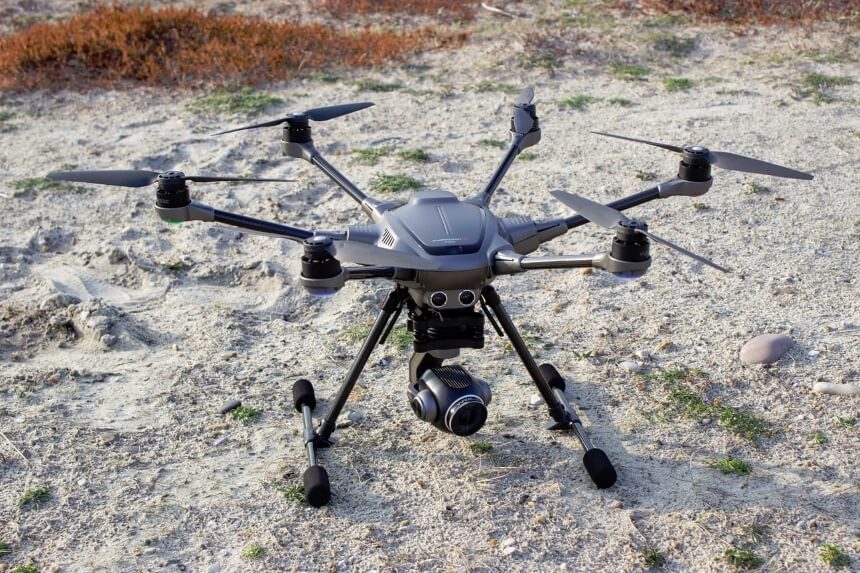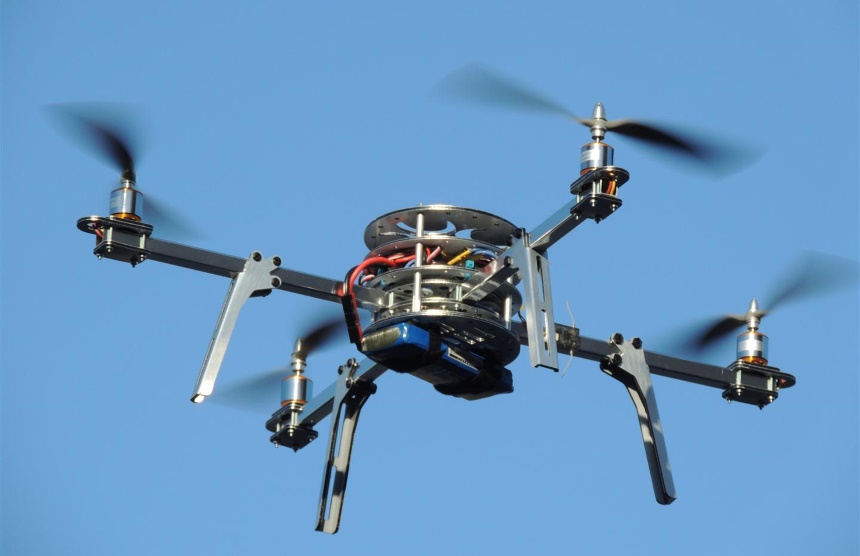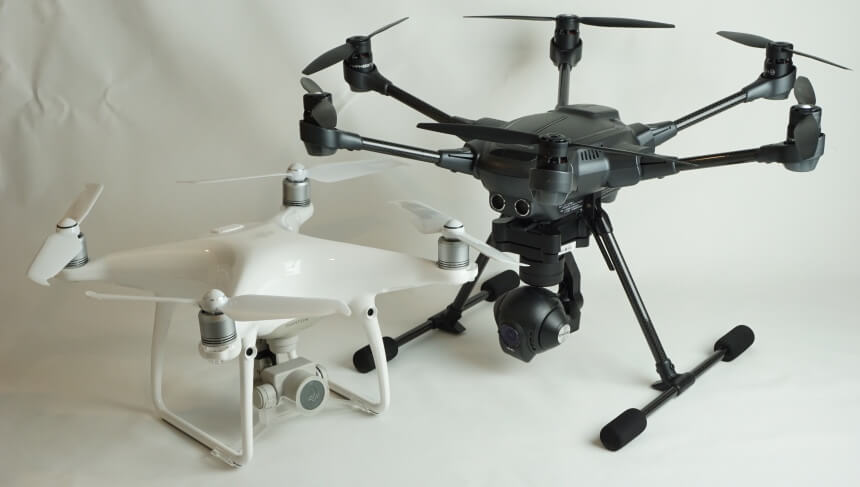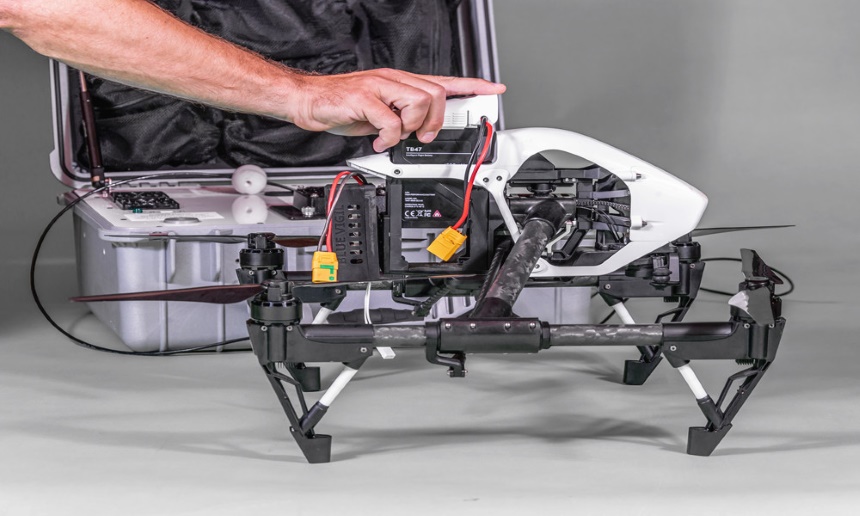The use of drones is growing rapidly, and it tends to be more adaptable for more applications in the coming years. However, a common challenge that drone lovers always have is the model to choose. The major opposing models that come to mind are the quadcopter vs. tricopter and the hexacopter vs. quadcopter.
The major difference between these models is their prefix, i.e., tri, which means three, quad, which means four, and hex which means six. These prefixes stand for the number of motors these drone models have. It also indicates how functional they are. In this post, we will help you understand how different they are, their strengths and weaknesses, and the things you should consider before deciding on the model to go for. However, we will be discussing the two most popular models – hexacopter and quadcopter.

Hexacopters are drones that have six motors. The motors are built on the body of the drone, and each of them is spaced by 120 degrees.
Hexacopters are lightweight, strong, and capable of carrying loads. They are very reliable for better speed, power, and stability. They are so dependable that even if one of their motors fails or gets damaged in the air, you will still be able to control them conveniently.
Because of their stability in the air, they are mostly used for aerial photography as it allows photographers to discover the world from a new look without any distortion whatsoever. In fact, according to photographers and videographers, Yuneec Typhoon H3, a hexacopter, is the most preferred drone for viewing images and recording videos from the sky.
Despite all the benefits that come with a hexacopter drone, it is still not to be used by everyone, especially beginners. This is because this type of drone is heavy and large, making it difficult to control. It gets worse when it’s to be controlled in an urban area, forest, or a place that has many obstacles. Most drone users, especially beginners, will find it difficult to navigate a hexacopter drone safely without hitting obstacles. This is due to their sizes, which is why it’s preferably used by only professionals.
A hexacopter drone has many parts, making it difficult to assemble and transport. A beginner will find it difficult to put the parts together. Also, it is expensive. However, its performance justifies its price; a hexacopter performs extraordinarily well.

Quadcopters are like helicopters that have four propellers.
Quadcopters use four arms, and these arms have motorized propellers at their tips. Another thing attached to quadcopters is a smaller tail that ensures stability. However, if one of the four arms gets damaged or fails in the air, they get unstable, and there’s nothing you can do to prevent them from crashing.
With quadcopters, you are not restricted from flying in urban areas or forests as they are small. In fact, they are one of the simplest drones to fly; you can easily learn how a quadcopter works with no stress. This is why they are very popular among drone lovers as they can be used for occupational purposes, recreational purposes, and every other thing. Even beginners get to assemble them easily and fly them without help.
Quadcopter drones are very popular, which has made deciding on the type to use quite daunting. However, according to most drone lovers, the Holy Stone HS710 is the best of them all. It’s lightweight, powerful, easy to fly, professional, and recreational. It incorporates all the possible characteristics you would need in a drone.
Choosing between hexacopters vs. quadcopters can sometimes be time-consuming. This is because these two drone models have characteristics that are alike, and at the same time, they have some different features. To help you choose rightly, we are now going to give a comparison of the two models.
Hexacopters are capable of flying at high speed and can withstand bad weather, but their battery life is limited. This reduces the amount of time they can spend in the air. Well, they fly faster because they have more wings, and they are capable of withstanding unfavorable weather because of their greater weight. However, they have a weaker battery, which limits the time they spend in the air.
Another factor that affects the flight time is the amount of load put on the drone. Too much load can make your drone imbalanced, thereby affecting the drone’s stability and flight time. To have maximum flight time, a high thrust-to-weight ratio Trusted Source Thrust to Weight Ratio There are four forces that act on an aircraft in flight: lift, weight, thrust, and drag. Forces are vector quantities having both a magnitude and a direction. The motion of the aircraft through the air depends on the relative magnitude and direction of the various forces. The weight of an airplane is determined by the size and materials used in the airplane’s construction and on the payload and fuel that the airplane carries. The weight is always directed towards the center of the earth. The thrust is determined by the size and type of propulsion system used on the airplane and on the throttle setting selected by the pilot. Thrust is normally directed forward along the center-line of the aircraft. Lift and drag are aerodynamic forces that depend on the shape and size of the aircraft, air conditions, and the flight velocity. Lift is directed perpendicular to the flight path and drag is directed along the flight path. www.grc.nasa.gov is needed, and this is more effective for drones that can carry more loads like hexacopters.

Hexacopters have more weight capacity than quadcopters.
Hexacopters are large and heavy, which makes them able to accommodate more weight. This is why you will find them mostly used by professional photographers and cinematographers who attach heavy cameras to their drones when they want to capture images and videos from the air.
Hexacopters are less stable than quadcopters. This is because hexacopters’ motors are less squared, and they are attached to be a little bit closer to one another; their motors are only 120 degrees apart from one another. Quadcopters, on the other hand, have more stability because their motors are more squared. Also, there is more space between the motors, making them more circularly arranged.
Hexacopters have six motors, which make them remain in the air conveniently. Even if one of the motors gets damaged or fails while flying, you can still maintain altitude and have a safe landing.
They are different in size. Hexacopters are larger, and they have many heavy parts, which makes them more difficult to assemble. In most cases, a beginner will need a professional to help with the assembling process. Hexacopters’ sizes make them unusable in places that have numerous obstructions, and they cannot also be used in tight spaces. Quadcopters are smaller than hexacopters and can be used in any place, no matter the obstructions in the area.
As previously said, hexacopters have six motors, and in the event that one of them gets damaged, they can still be controlled safely to the ground. In fact, if two motors get faulty (as long as they are not beside each other), they can still be controlled to land safely. This saves you the cost of buying another drone because the former would have crashed.
Quadcopters, on the other hand, have four motors, and if one of them fails, the drone comes to the ground immediately, damaging the drone itself and the attached equipment. So, the safety of your drone and other attached equipment should be put into consideration before choosing the drone model to go for.

Hexacopters are known to have lesser battery life than quadcopters.
Hexacopters have more motors that carry more loads, but they cannot fly for a long time. Quadcopters have a lesser number of motors that carry lesser loads but have a stronger battery life that makes them fly for a longer time.
This is where quadcopters owners get to enjoy more. Quadcopters can fly at the speed of 100 mph, which is way faster than all the types of hexacopters. In fact, they can fly faster than octocopters. This is why quadcopters are being used in racing sports. They have more capability of tracking any fast object than hexacopters, octocopters, and any other drone model.
Hexacopters are more costly than quadcopters. This is because they have more motors, and they require stronger Electronic Speed Control (ESC) Trusted Source Electronic Speed Control (ESC) : Circuit, Types, Working & Its Applications At present, we can observe the electric motors’ speed control all over modern society. So, the list of speed control mainly includes an extensive range of machines which ranges from basic electrical appliances used in a household like in the garage, garden to large industrial plants through pumps, machine tools, conveyor belts, etc. So we can notice that how important and necessary this speed control technique is for several electrical machines. We cannot perform longer without an efficient method to control speed. So, the electronic speed control method is used to control the machinery as well as motors rotational speed. This article discusses an overview of electronic speed control for motors, drones, vehicles, etc. www.elprocus.com . Hexacopters are not used by hobbyists for fun or for other recreational purposes. Rather they are used by industries for work. They are very expensive machines. Quadcopters are less expensive and can be used by hobbyists for fun, and can be used by first-time drone users. In fact, you can get drones that are under $200 that offer extensive services that give you a great chance to master a hobby.
Before you choose a drone model, the first thing you need to do is to consider what you need the drone for. Don’t choose a drone based on its features, such as the number of motors, battery life, price, etc. Make your selection based on the purpose of why you need a drone in the first place.
In this article, we’ve discussed hexacopter vs. quadcopter drones extensively, and by now, you should be able to make a better choice. If you are a hobbyist or a beginner who wants a drone that you can fly around or practice with, a quadcopter is appropriate. But if you need a drone for work like photography, cinematography, or the like, a hexacopter is appropriate.